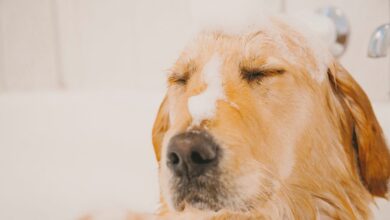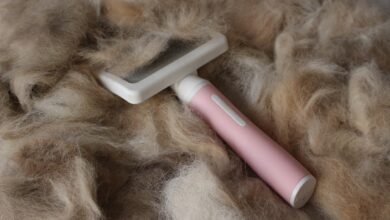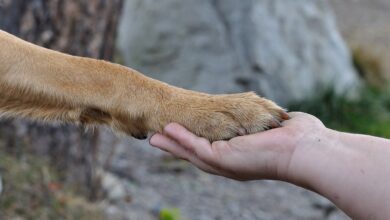How to Clean Your Labrador or Golden Retriever’s Ears
Start the regime while they’re still puppies

BY BERNADETTE ROBERTS
Labradors and Golden Retrievers are prone to ear infections due to their floppy ears and active lifestyles. Regular ear cleaning is essential for maintaining their ear health, preventing infections, and ensuring your canine friend remains comfortable and happy.
Why Ear Cleaning is Important
Both Labradors and Golden Retrievers have floppy ears that trap moisture, dirt, and debris, creating a breeding ground for bacteria and yeast. If left unchecked, this can lead to painful ear infections, foul odours, excessive scratching, and even hearing loss in severe cases. Regular ear cleaning helps to prevent these issues and ensures your dog’s ears remain healthy.
How Often Should You Clean Your Dog’s Ears?
While every dog is different, a general guideline is to clean your Labrador or Golden Retriever’s ears at least once a week. If your dog is prone to ear infections or frequently swims, you may need to clean them more often. Always check your dog’s ears for signs of dirt, wax buildup, redness, or an unusual smell.
What You’ll Need for Ear Cleaning
To properly clean your dog’s ears, gather the following items:
A high-quality dog ear cleaner (vet-recommended)
Natural ear-cleaning solutions (optional, see below)
Cotton pads or gauze
A soft towel
Treats (to reward your dog)
A gentle touch and patience
Natural Ear Cleaning Solutions
If you prefer a more natural approach, you can use gentle, dog-safe solutions:
Apple Cider Vinegar and Water – Mix equal parts apple cider vinegar and distilled water. This helps break down wax and has antimicrobial properties.
Coconut Oil – Warm a small amount of organic coconut oil and apply it with a cotton pad for a soothing, antibacterial effect.
Chamomile Tea – Brew chamomile tea, let it cool, and use it as a gentle ear rinse with anti-inflammatory benefits.
Aloe Vera Gel – Pure aloe vera can help soothe irritation and fight bacteria in the ear.
Always check with your veterinarian before using homemade solutions, especially if your dog has sensitive ears or a history of infections.
A Step-by-Step Guide to Cleaning Your Dog’s Ears
Choose a Calm Environment – Find a quiet space where your dog feels relaxed. Have treats on hand to reward them.
Inspect the Ears – Look for signs of redness, swelling, or foul odours. If you notice anything unusual, consult a vet before cleaning.
Apply the Ear Cleaner – Squeeze a few drops of your chosen ear-cleaning solution into the ear canal. Massage the base of the ear for 20-30 seconds to loosen dirt and wax.
Let Your Dog Shake – Allow your dog to shake its head to help remove loosened debris.
Wipe the Ear – Use a cotton pad or gauze to gently wipe out any remaining dirt or wax. Avoid using cotton swabs, as they can push debris deeper into the ear.
Repeat on the Other Ear – Clean both ears thoroughly using the same process.
Reward Your Dog – Give your pup plenty of praise and a treat to create a positive association with ear cleaning.
Keeping Your Dog Calm and Happy During Ear Cleaning
Some dogs may resist ear cleaning, so here are a few tips to keep them comfortable:
- Start slow and be gentle.
- Use a calm and reassuring voice.
- Offer treats throughout the process.
- Pair ear cleaning with playtime or cuddles to make it a positive experience.
- If your dog is anxious, try breaking the cleaning into smaller steps and rewarding each one.
When to See a Veterinarian
While regular cleaning helps maintain ear health, some issues require professional care. Contact your vet if you notice:
- Persistent redness or swelling
- A strong, foul smell
- Excessive head shaking or scratching
- Discharge that is yellow, brown, or bloody
- Signs of pain when touching the ears
Establishing a consistent ear-cleaning routine for your Labrador or Golden Retriever is essential for preventing infections and maintaining overall ear health. By using the right cleaning solutions, staying patient, and making the process positive, you can keep your dog’s ears clean and free of discomfort. A few minutes of care each week will go a long way in ensuring your dog stays happy and healthy for years to come.






